Laos Jungle Papaya Salad
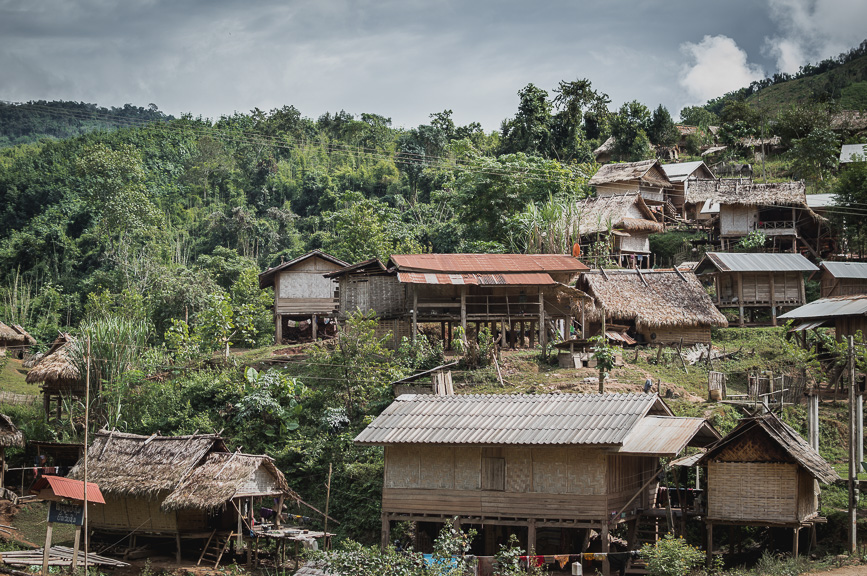
Leeches are not in my OK list. I know they are technically harmless, but the idea of a tiny worm turning into a giant blood-filled slug at my expense is not convincing. There is no rationality to this of course, which is how I ended up trekking in dense 35 degrees jungle heat wrapped from head to toe in water resistant clothing. Poor Nico was assigned to leech patrol in case one of those sneaky little buggers managed to stick itself to the sweat drops I had chosen to stew in. If you ignored this crazed trekker though, the picture around us was prettier indeed.
Juicy, fat umbrellas of a leaf sheltered the shorter bushes below. Jungle ferns burst out of the hills like green fireworks and hollow bamboo occasionally creaked in the wind, wood stretching, like the hull of an empty ship rocking against saltine waves. We were on a three day journey deep into the jungles of Luang Namtha in Laos. While I was a walking Gore-tex mummy, Jsanpeng and Noy, our guides, were navigating their way through thick mud in flip-flops; Jsanpeng occasionally drawing out a machete from his pirate belt, before bringing it down on dead wood, a walking stick tailor-made for each of us.
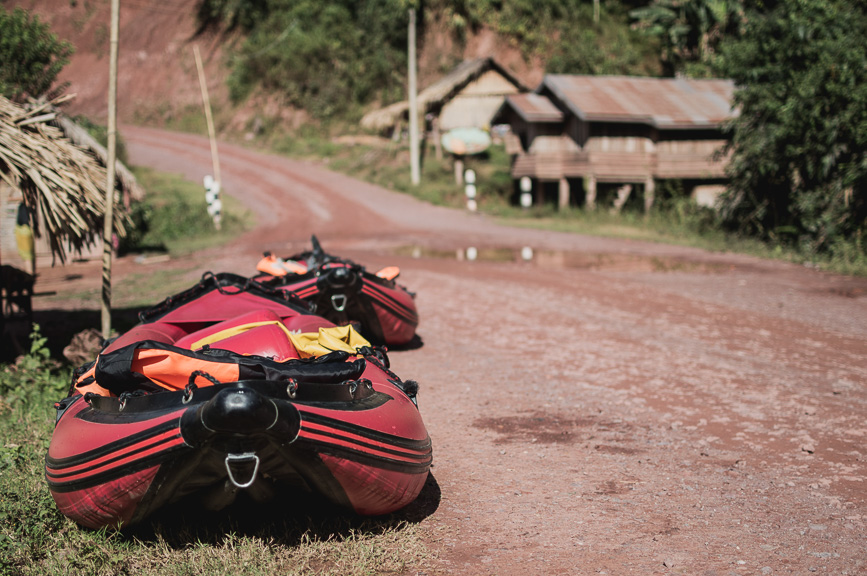
We had kayaked to a Lenten village for lunch, a minority which had moved from China to Laos in the 19th century to grow cotton and crops. Only about 1000 Lenten families remain in Laos, where they still learn Mandarin and uncommonly for this country, still use chopsticks. Well-known for their intricate fabric-making, women and men have versions of deep-indigo shift shirts, hand-made by families and buttoned up into a side Chinese collar with tiny silver pearls. Self-subsistent through animal-rearing, their houses are built straight on the ground, unlike the more wide-spread stilt houses in Laos.

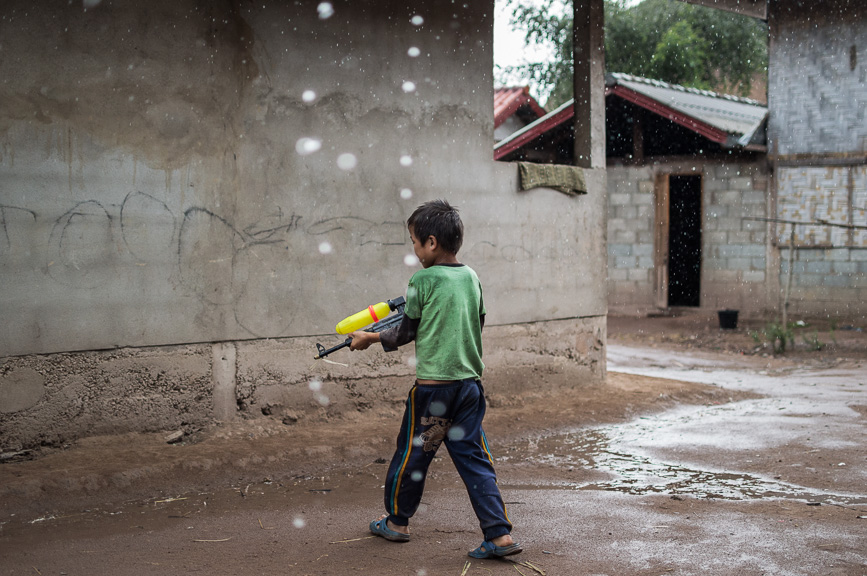

We play with the children and hop back into the muddy river, thick with brown chocolate and down-stream currents. After conquering a few more rapids (rapids may be a slight exaggeration) we stop to drag our kayaks up the river banks to Huaylet. A Khammu village named after a small nearby river which flows like veins of blood, a life source in the past. The Khammu originating from Cambodia are a people who live from the jungle, collecting its fruits and growing mountain rice along raising black piglets and red-beaked ducks. A road and electricity arrived here 5 years ago, opening up a new link to the urban markets for the villagers. One single family in the village owns a rice-husk removing machine and the mechanic grumbling gets louder as sacks of rice are poured one after another into its mouth, spitting out clean grains for about 5000 kip per bag (US$ 0.60). Jsanpeng tells us that each bag of rice should last a family for about a month and then the queueing starts again.


The rain is unrelenting and as we make our way on foot up the steep slimy path, our walking sticks thrust into the creamy soil, saving us from an unwanted mud bath. Jsanpeng and Noy decide that whoever falls over owes everyone else a beer, so the challenge is on. Golden mushroom cups fill with sticky water as the resin from rubber plantations solidify into white glue. Rubber trees engulf local vegetation as farms pop up everywhere, projects to sell to the neighbouring Chinese. A tree produces about a kilo of rubber monthly, earning them 3950 kip (US$ 0.50) per bowl.
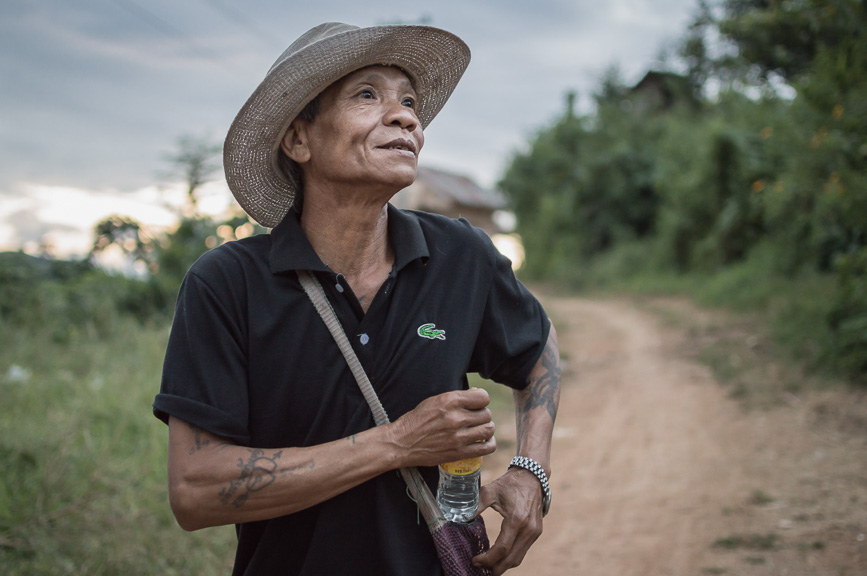
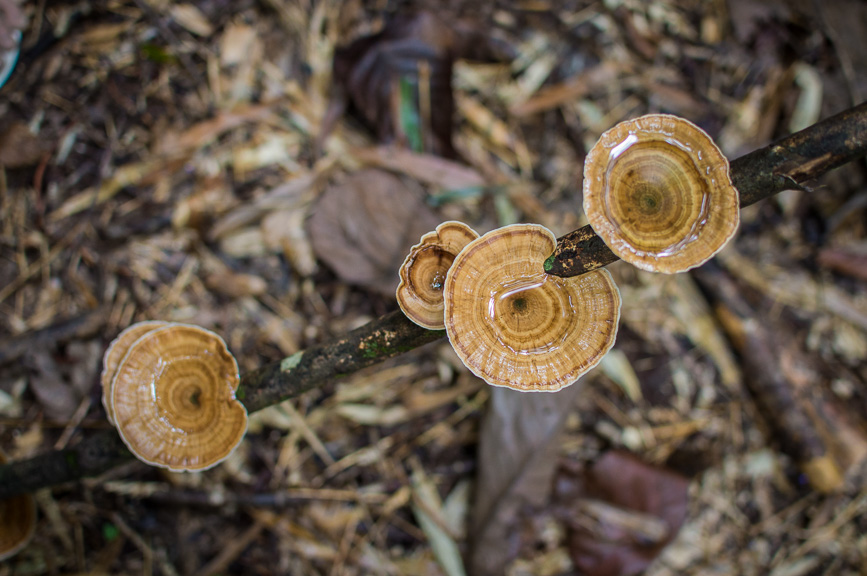
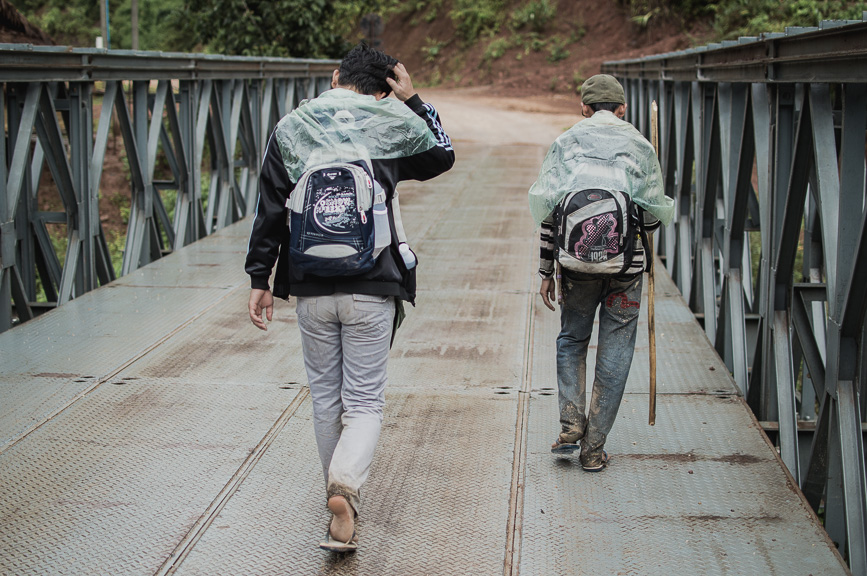
We meander among the sun rays that are finally shooting through the dense upper growth of the jungle. Swarms of mosquitoes are pulled away like curtains, my eye focused on my step, the floor a carpet of dead leaves. Millions of lianas hang like mini trapeze artists, flying from branch to branch, suspended in air, mossy and light. In the hills by the river, Sopsinh appears, another Khammu village where we will spend the night. Excited boys are splashing by the river, their bamboo rafts tied together with weeds, their clothes discarded in a pile by the shore.
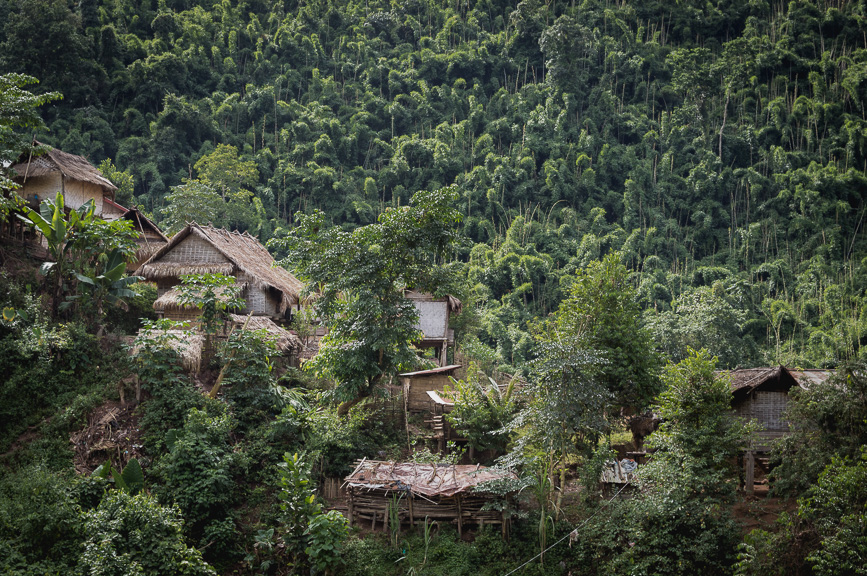
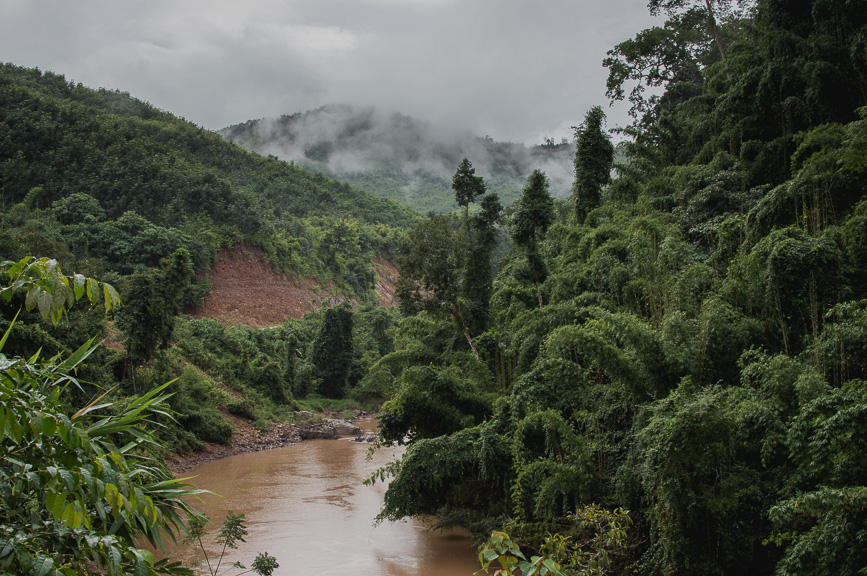

We are starving and Noy says it is time for tam som. Before I know it, he is running off with the chickens and ducks behind him and clambering up a tree to grab a fresh green papaya. We peel it by the cold spring that feeds the river and rinse it, before bringing it up to the kitchen. The semi-detached room is dark under its rattan roof, its bamboo-woven walls held up by stilts and spiderwebs float from hanging corn cobs to dangling pans. Everything necessary is on the walls. Knives, wooden basins for sticky rice cooling, scissors, spoons, forks, palettes, a headlamp in case the power goes out. All we need is a cleaver as Noy shows us how to shred a green papaya in the jungle.
As we devour the papaya salad with our greedy hands and my lips are exploding from the “peht lai” (very spicy) chillies, all Noy keeps repeating is, “Not Enough Chillies”!
And I tell you, I have had papaya salads. I have had them from North to South, West to East, in the mountains of Laos and on the beaches of Thailand. But this one, this one that we made in the jungle with Noy where I could no longer feel my tongue, is the one I still dream of.
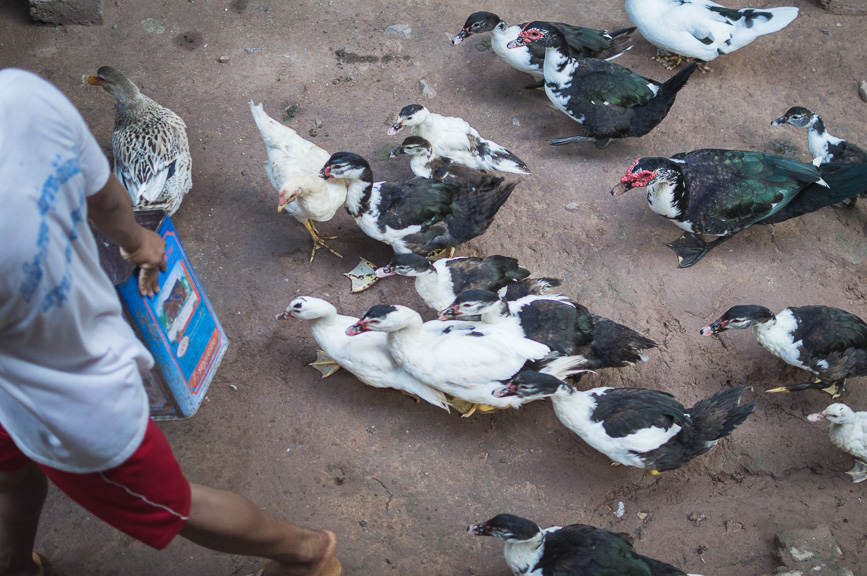
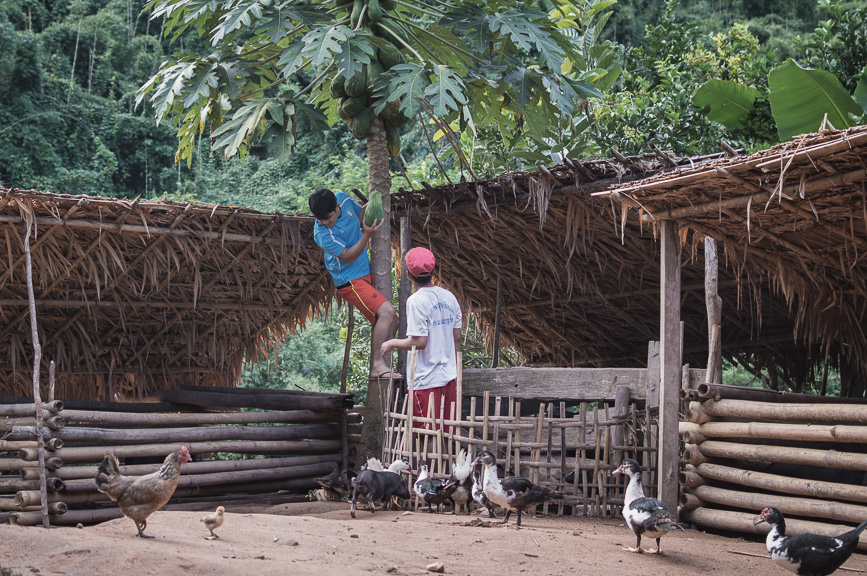

LAOS JUNGLE PAPAYA SALAD ຕໍາສົ້ມ \ˌlɑos dʒəŋgəl pəpajə sæləd\
In Laos, green papaya salad is known as tam som, which means “pounded sour”, or more specifically tam maak hoong, meaning “pounded papaya”. This salad is not for dainty tossing, get ready to pound and massage away. You can add snake beans or shredded white cabbage, but this was the simple jungle way.
Serves 2 as a light lunch or 4 as a side dish
For the salad
1 green papaya (it should be firm and unripe)
1 tomato chopped or 5 cherry tomatoes halved
For the dressing
5 small green Bird’s Eye chillies
1 small red Bird’s Eye chilli
2 garlic cloves
1 tbsp shrimp paste (preferably the creamy kind)
2 tsp white granulated sugar
1 tsp salt
2 small limes, juiced
To garnish
3 tbsp of toasted peanuts
small bunch of fresh coriander, washed
Prepare the Papaya Shreds
This is Noy’s technique and often you will find street food vendors using the same method both in Laos and Thailand. To prepare the green papaya, peel its skin and wash it well several times to remove the sap. Using a strong knife, hold the papaya vertically in your palm and make thin long dents on its surface, about 3 or 4mm deep. Continue round the whole papaya. Then hold the fruit vertically onto a stable surface and with a potato peeler, slice down vertically in the same direction of the knife indentations. This way you will get thin shreds easily. One you have completed one layer, repeat until you arrive close to the papaya’s core. Do not use the soft interior, add it to the compost or get creative!
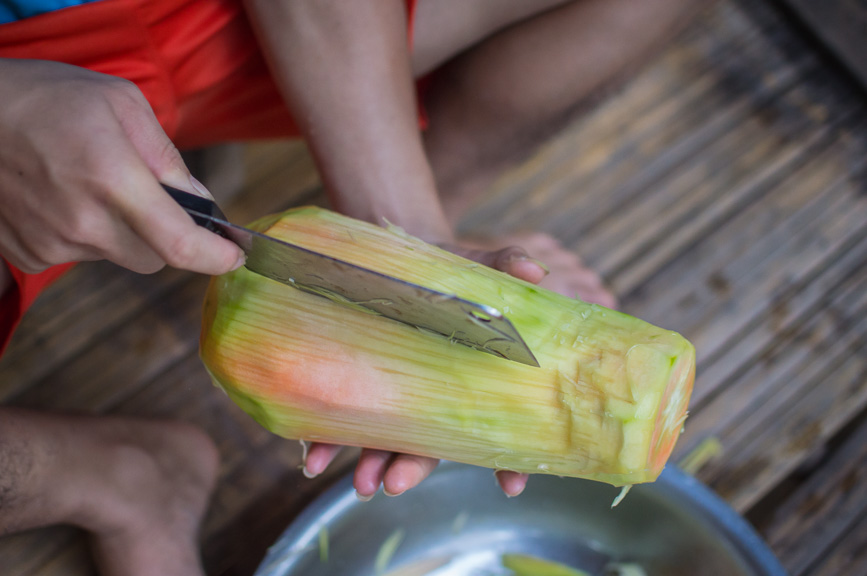
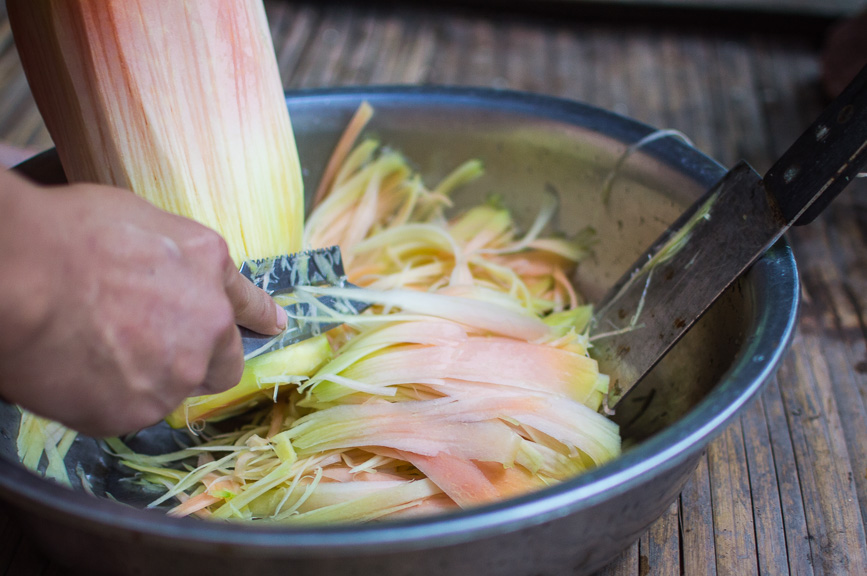
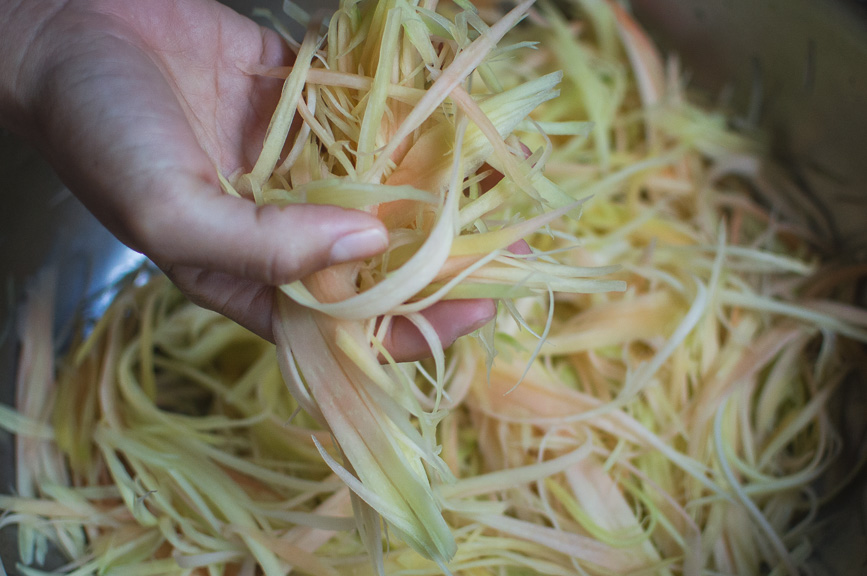
Make the Dressing
Traditionally in Laos, the dressing and final salad are pounded in a khok – a deep wooden bowl which functions as a mortar. You can use a mortar and pestle or blender to make the dressing and then mix everything in a bigger bowl. Mince the garlic and finely chop the chillies. Place into a mortar. Add the shrimp paste, sugar, salt and lime juice. Take the pestle and pound the ingredients together until it becomes a thick dressing.
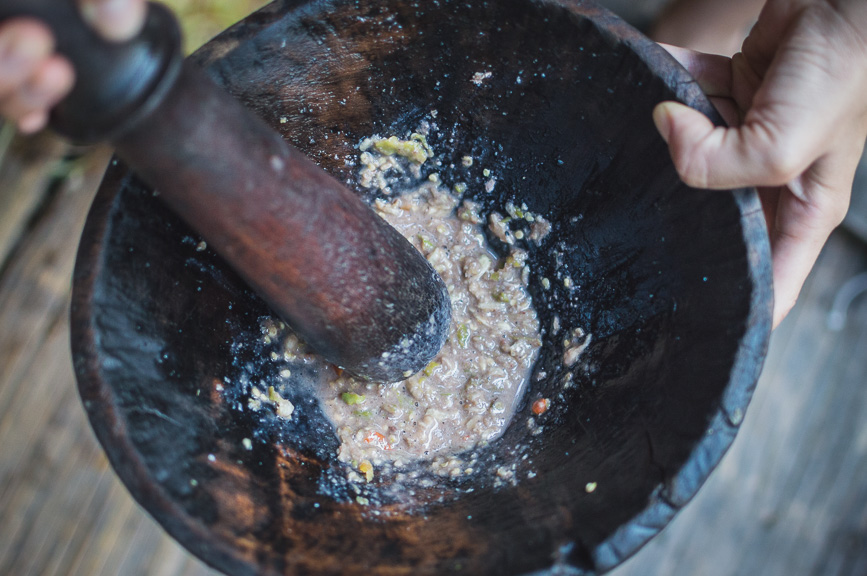
Assemble & Serve
Add the shredded papaya and tomato to the dressing, mix a little and then pound gently with the pestle to break the surface of the papaya just enough to absorb the flavours. If you are not worried about your hands stinging from the chilli and have no open wounds, go ahead and massage the dressing into the papaya.
When it is all nicely coated, sprinkle with the toasted peanuts and fresh coriander. Accompany with sticky rice and eat with your hands. Everything tastes better straight from hand to mouth.
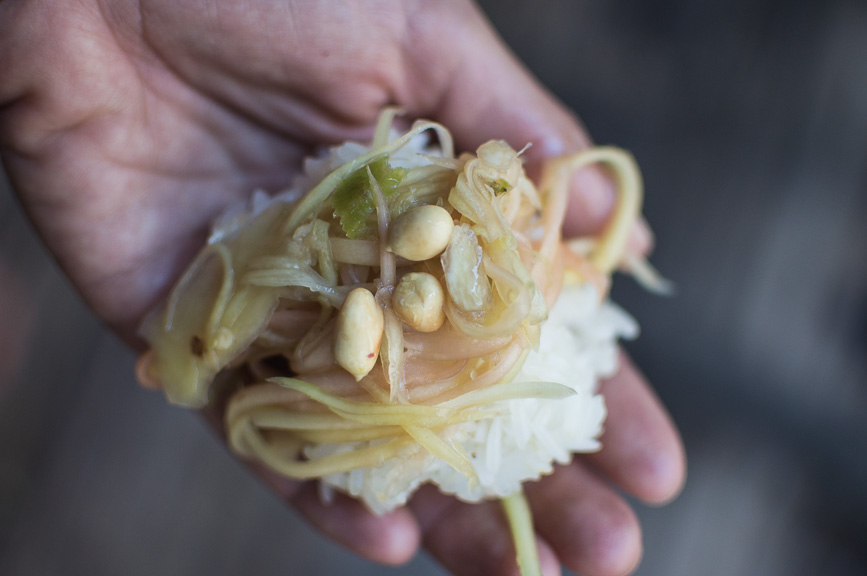
Warning: this is highly addictive.











2 Comments
tammy
February 11, 2015Sounds yummy!
Would love to try it out!
Jen
February 25, 2015I just discovered your blog and I’m in love. Following you guys on Instagram now! Love the concept, just today (we’re in Xingping, China) we were having a delicious Cucumber Salad with hot chillies, garlic and peanuts and I thought to myself – I’ve got to get better at tracking the recipes of things I eat abroad. Then I found this! Your site is fantastic, love the concept. Happy travels guys!
Jen
http://www.thriftynomads.com